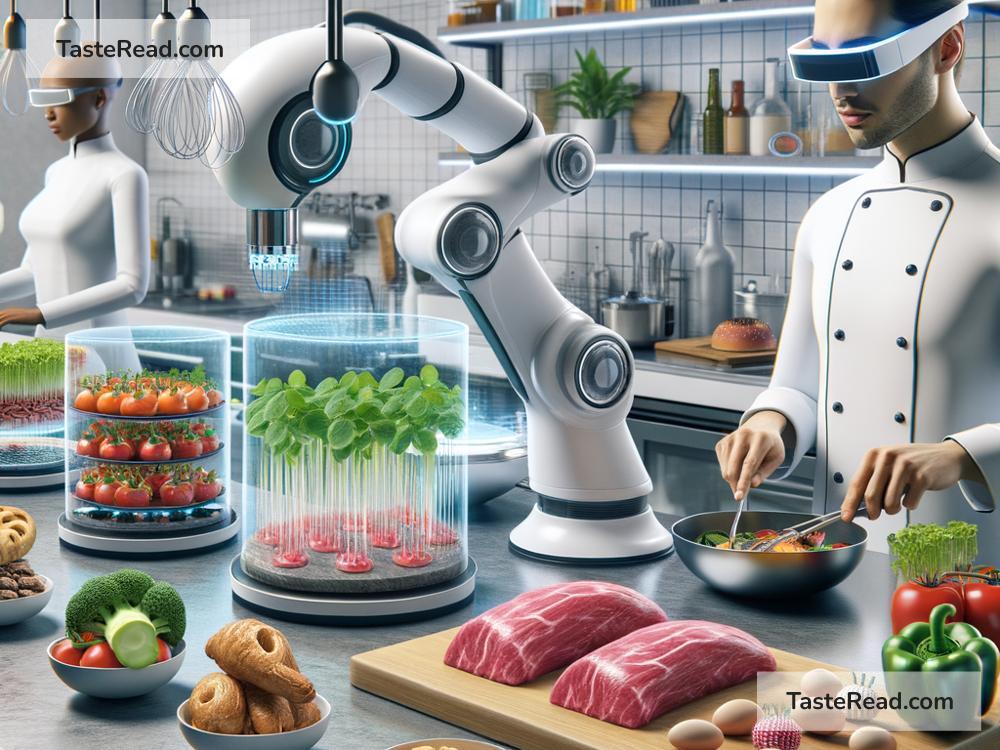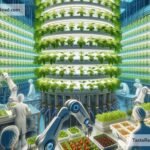The Future of Food: Innovative Solutions for a Changing World
Food is an essential part of life. We need it to survive, but it’s more than just fuel for our bodies. Food brings us joy, connects us with others, and reflects culture and tradition. However, the way we produce and eat food is facing big challenges. Climate change, a growing population, and limited resources make it harder to feed everyone in sustainable ways. But guess what? There are exciting innovations that promise to shape the future of food!
Let’s take a look at why change is needed and explore some amazing solutions that could transform how we eat—while making sure we keep the planet healthy.
Why Change Is Necessary
By 2050, the global population is expected to grow to nearly 10 billion people. That means we’ll need to produce more food than ever before. At the same time, farming faces challenges like unpredictable weather, droughts, floods, and decreasing land availability. Traditional farming techniques often rely on excessive water and chemicals, which can damage the environment and lead to deforestation.
On top of that, food waste is a major problem. A staggering one-third of all food produced is thrown away or wasted. If we could find ways to use all the food we make, we might not need to grow as much in the first place!
The current food system also has effects on human health. Processed foods are common, but they can lead to health issues like obesity, diabetes, and heart disease. People everywhere are looking for better ways to eat—healthier, tastier, and good for the planet. That brings us to innovation.
Innovative Solutions for the Future of Food
Solving the world’s food challenges requires creative ideas. Scientists, farmers, and food experts are working on new ways to produce and consume food. These ideas sound like something out of science fiction, but they’re happening right now. Here are some of the most exciting ones:
1. Vertical Farming
One of the coolest ways to grow food is vertical farming. Instead of planting crops across acres of land, vertical farms use stacked layers to grow food indoors. These farms use LED lights, recycled water, and controlled environments to help plants thrive. Vertical farming saves space, uses less water, and doesn’t need harmful pesticides. Plus, these farms can be set up in cities, bringing fresh produce closer to people who need it.
Imagine visiting a skyscraper filled with lettuce, strawberries, and other plants growing right in your neighborhood!
2. Lab-Grown Meat
Meat production is another area ripe for change. Raising animals for food requires large amounts of land, water, and energy—and it creates lots of greenhouse gases. To address this, scientists have developed lab-grown meat, also called cultured meat. This meat is made from animal cells in laboratories, meaning no animals are harmed.
Lab-grown meat tastes just like traditional meat, but it’s better for the planet. It uses fewer resources and produces less pollution. While it’s still expensive to produce, ongoing research and investment are helping bring costs down.
3. Alternative Proteins
The future isn’t just about lab-grown meats—it’s also about finding new sources of protein. Companies are exploring foods like insect-based protein, algae, and plant-based alternatives to replace meat. For example, crickets are packed with nutrients and require far fewer resources to farm than cows.
Another popular choice is plant-based meat substitutes made from soybeans, peas, mushrooms, and other ingredients that mimic the texture and flavor of meat. Brands like Impossible Foods and Beyond Meat have already shown how delicious and sustainable alternatives can be!
4. Food from Air?
It might sound unbelievable, but scientists are working on ways to create food from air. A company called Solar Foods uses a process that turns carbon dioxide from the air into a protein powder called Solein using renewable energy. This could revolutionize food production by creating nutritious ingredients with nearly zero impact on the environment.
5. Smarter Food Waste Solutions
Reducing food waste is equally important. Technology is being developed to extend the shelf life of food, track its journey from farm to store, and help people waste less. Apps can connect people to stores and restaurants giving away unsold food, while startups use leftover scraps to create new products like juices and snacks. This ensures food isn’t wasted, but repurposed!
6. Personalized Nutrition
In the future, diets might become smarter and more personalized. Modern technology, like DNA testing and apps, can help people understand what their specific bodies need to thrive. Imagine getting a diet plan designed just for you—based on your genetics, health, and lifestyle. This can lead to healthier habits and reduce the need for fad diets.
A Bright Future Ahead
The future of food is both exciting and important. While the challenges are big, the solutions are bigger. Advances like vertical farming, lab-grown meat, and smarter ways to reduce food waste promise to make food systems healthier, more sustainable, and kinder to the planet.
Not only will these innovations help feed billions, but they’ll also open doors to tastier, more creative ways of eating. From juicy burgers grown in labs to delicious plant-based meals, the options will be endless—and Earth will thank us.
As consumers, we also play a role in shaping the future. We can choose sustainable products, waste less food, and support companies working on innovative ideas. Small actions create big changes.
The future of food is bright, and together, we’re all part of the journey toward a better tomorrow. 🌱


